31+ Sample Club Proposals
-
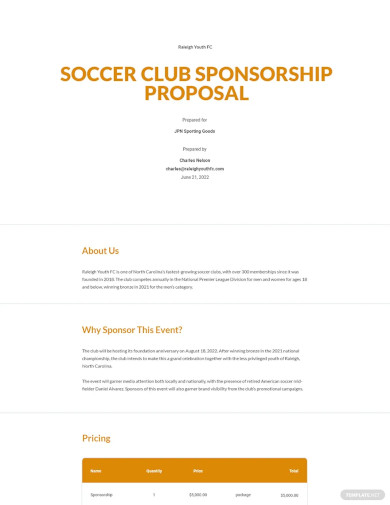
Soccer Club Sponsorship Proposal Template
download now -

Club Event Proposal Template
download now -
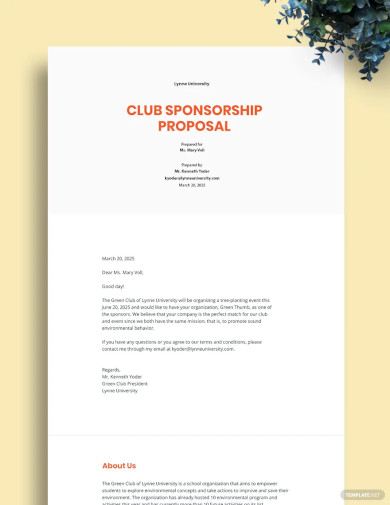
Club Sponsorship Proposal Template
download now -
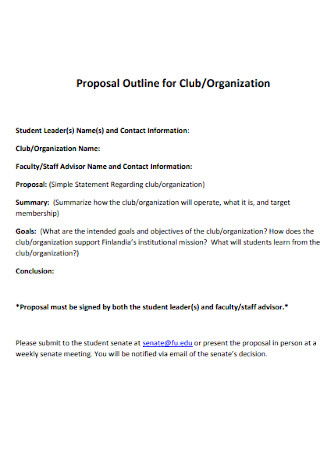
Proposal Outline for Club
download now -
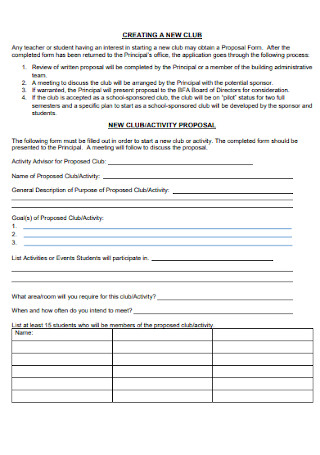
New Club Activity Proposal
download now -
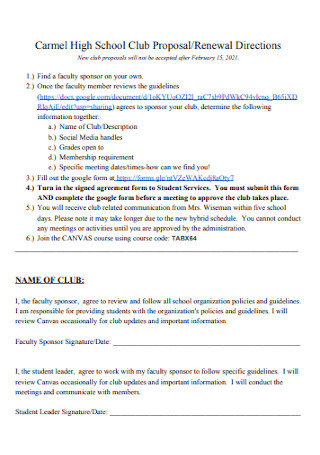
High School Club Proposal
download now -

Club Prject Proposal
download now -
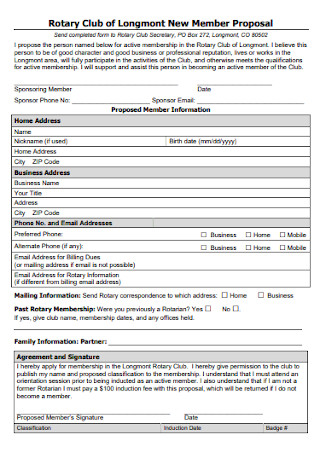
Club of New Member Proposal
download now -
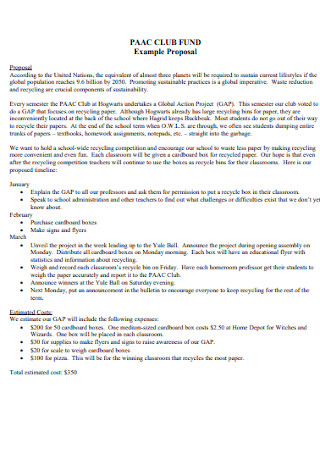
Club Fund Proposal
download now -

Art Club Proposal
download now -
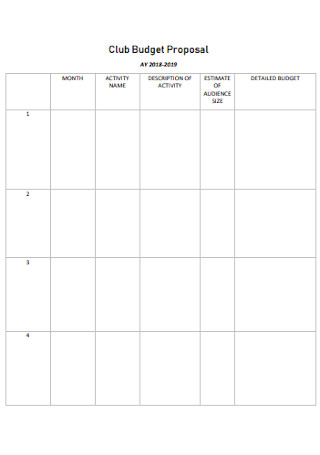
Club Budget Proposal
download now -

Organization Proposal for Club Travel
download now -
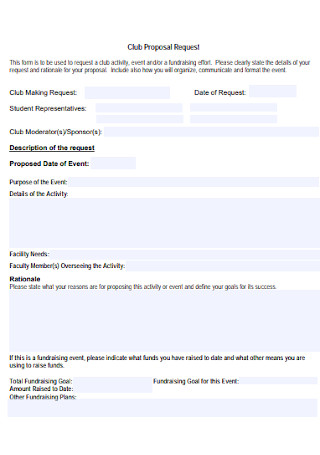
Club Proposal Request Template
download now -
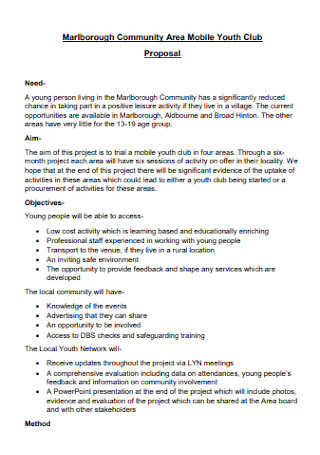
Mobile Youth Club Proposal
download now -

Club of Membership Proposal
download now -
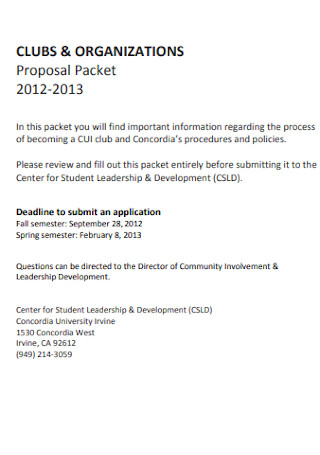
Club Organization Proposal
download now -
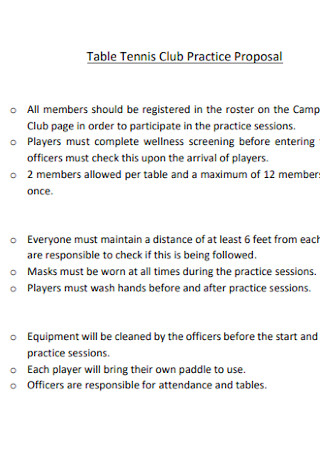
Table Tennis Club Practice Proposal
download now -
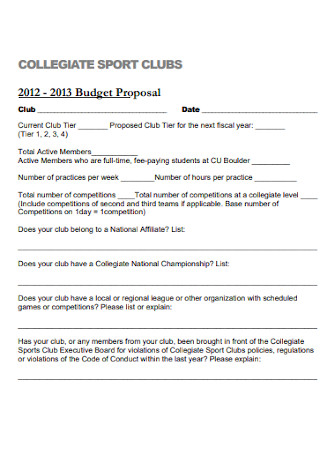
Sport Club Budget Proposal
download now -
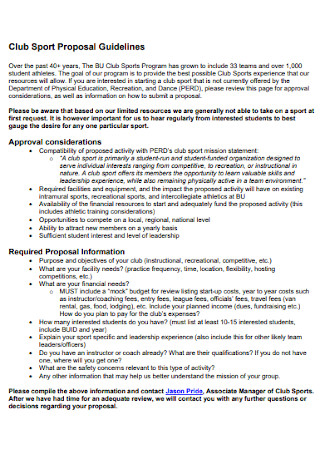
Club Sport Proposal
download now -
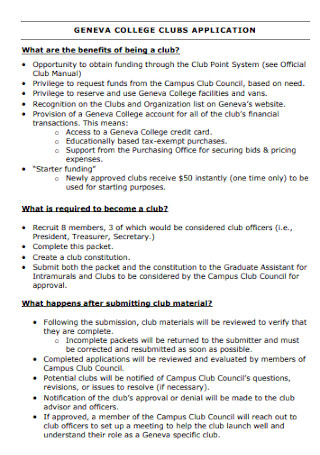
College Club Proposal
download now -
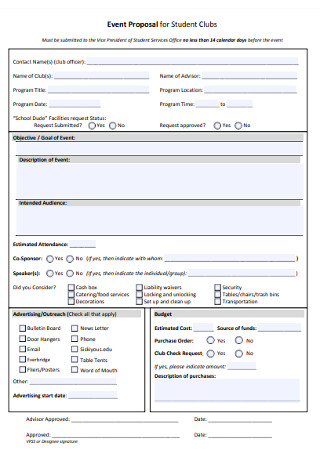
Event Proposal for Club
download now -
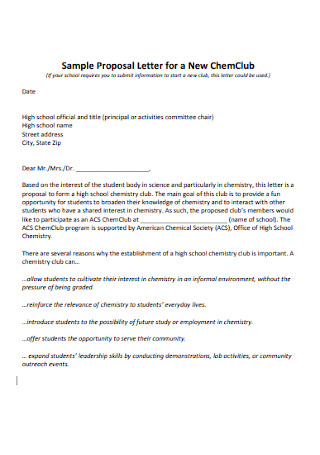
New Club Proposal Letter
download now -
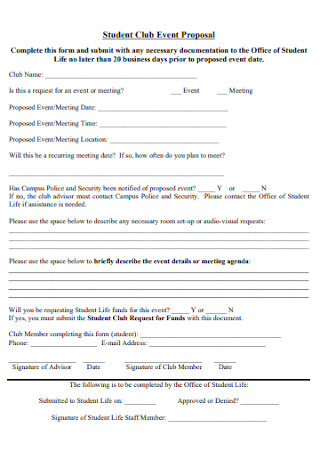
Student Club Event Proposal
download now -
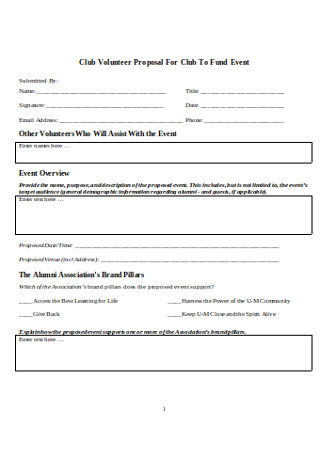
Club Volunteer Proposal
download now -

Club Event Proposal
download now -

Volleyball Club Sponsorship Proposal
download now -

Club Summer Trails Proposal
download now -
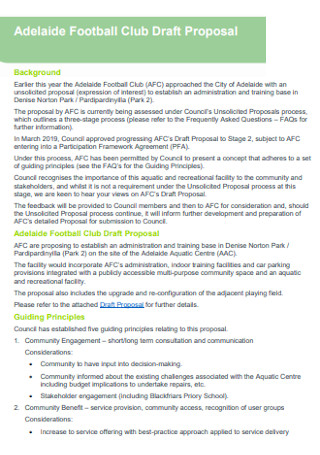
Football Club Proposal
download now -
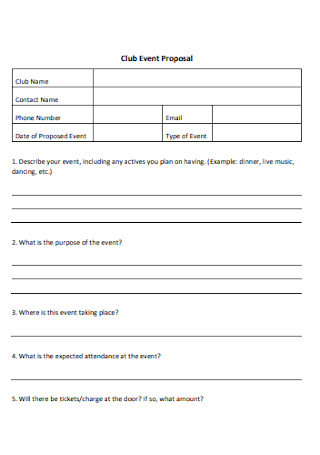
Club Event Proposal Format
download now -
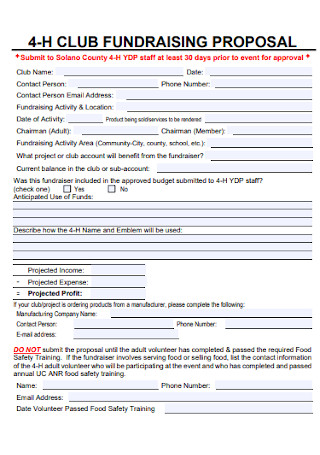
Club Fundraising Proposal
download now -
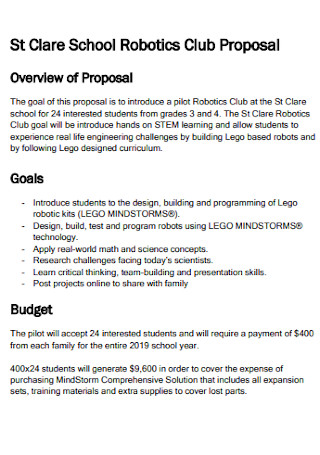
School Robotics Club Proposal
download now -
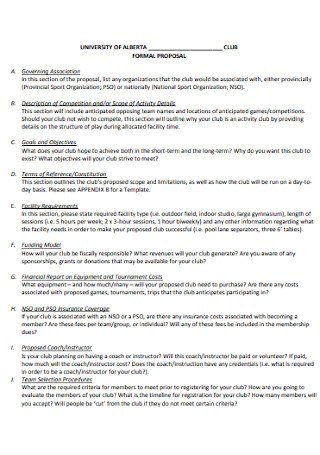
Formal Club Proposal
download now
FREE Club Proposal s to Download
31+ Sample Club Proposals
What are Club Proposals?
Anatomy of a Club Proposal
Student Clubs and Why You Should Join One
Marketing your Club Activity/Event Proposal
FAQs
How Do You Write a Club Proposal?
How do you propose to a high school club?
How Do You Write a Proposal Letter?
The only catch is that while you may be able to talk excitedly about it with no holds barred to a friend, it’s different when you have to actually propose it to a student panel or the organization’s committee in a formal manner which you have zero knowledge or you are unsure of. Well, not for long because with these club proposal templates, you may now get the chance to start your own club or sneak in the hobby you’ve grown to be passionate about into your club activities in the same language that formal governing bodies of the student clubs and organizations can find appropriate enough to deal with and maybe even consider.
What are Club Proposals?
The idea of a club proposal is pretty self-explanatory. You want to start your own club or you want to propose an addition to the activities your organization has so you want to pitch it to those with authority to grant it.
Not all universities will offer you clubs that are in line with your interests. Now, you can have the option of joining something else or similar or maybe even something completely new to challenge you, but we both know you won’t be able to shake off that feeling that you could be spending your time and energy for something that you actually want and something worthwhile. When that feeling starts to consume you, the only thing left to do in response to it is to spearhead the creation of that club of yours and turn it into a reality.
However, before clubs are registered and acknowledged as legit, it goes through a lengthy process that you have to mentally and physically prepare yourself with. There could be many others like you who want to make a club of theirs that caters to their interests and hobbies as well and having a lot of people in the market can wear things down. For instance, each university is allotted budgets and most of the time there won’t be enough for pre-existing club formations, let alone new ones. It’s the budget restraints that make creating new clubs anxiety-inducing. But, before you even get to the exhausting part of forming a club, you must be sure your idea is even considered in the first place and this begins with a submission of an initial club proposal which in summary should state your intentions, how the club’s formation is necessary and represents your university’s endeavors and vision and how you should convince the people you are proposing it to to grant your request.
Anatomy of a Club Proposal
Universities should have provided their own club proposal templates making it convenient for the interested individuals to chime in with their requests for new club formations and suggestions for club activities and it will be structured in a variety of ways. Regardless of these differences, there is actually no right format as it all pretty much boils down to comprising the necessary and persuasive requirements.
1. Club Name
Is it really a club if it doesn’t have a name? This should be common knowledge but be sure the club name comprises a maximum of 4 words for easier utterance and abbreviation. It doesn’t have to be anything intellectual sounding but must at least be catchy enough that it warrants enough attention.
2. Contact Information of Club ‘Heads’ and their Responsibilities
You have to already assume that your club is an established one in the sense that it already has a semblance of a hierarchy. When roles are assigned to key members of the club, it follows that you list their necessary contact information which most of the time includes their names, birthdates, phone number and emails. Along with the assigning of roles, you may also opt to detail their corresponding duties in the club.
3. General Description of the Club
Briefly define what the club is about including its purpose and what it aims to be. It doesn’t necessarily have to be lengthy but it does have to have the right and subtle amount of persuasion. This is the section that you most probably want to sit down to spend writing draft after draft until you come up with a final output that best and concisely details your club. We suggest you plan this one out ahead of time and to not forget it be sure to have it included in your daily schedules or your priority lists. The most well-written club proposals that are sure to best explain how it embodies the school’s ideals and support its mission statement and goals get the highest chance of being entertained.
4. Intention of Forming the Club
You may want to be more personal in your approach to writing this section of your proposal. Mention experiences that sparked your interest and motivated you so much you want to create a club out of it. You may discuss as well how other students could relate to your experience and how it could benefit them if they were to be interested in being part of the club’s members. You may also cite how this club could be a bit more nuanced than most clubs. Explain why it’s different and unlike most clubs and how this difference, for example how it can cater to the minority population of the student body or how it is best interested in conversations and programs regarding race and gender, can be exactly what interested members need.
5. Related Activities for the Club
Again, you must already assume your club is already in existence since that way you can be more precise of what it’s about so that you can come up with related activities the club can be facilitating. The activities must have major takeaways such as the development of life skills besides the obvious leadership and communication management plan skills like engaging with diverse groups of people and sensibility on touching on triggering topics. This way, the body responsible for going through your proposal can be convinced to give you an opportunity to expound more on your proposal.
6. Budget
Club activities cannot be realized without the club budget. In your proposal, you can attach a budget proposal that you expect your club to function on. While this is optional, it helps your case if you have already budget where the budget money goes.
7. Pioneering Members
You don’t just create a club where you are its own member regardless if it was an interest you personally take a strong liking to. Clubs are formed by a group of people sharing the same interests. It is a unit that fosters community and our association with it stems from our inherent need to belong. With that in mind, you want to share this space to people who want to be part of something and be accepted in these spaces so you must actively search for interested members who will willingly sign up on your membership forms. The only way you can get someone to join though is when you’ve intentionally structured this club to be inclusive and available. Most schools will require a specific number of students for the proposed club but it’s best to be able to gather at least 10-15 or probably more as it builds credibility to your club.
Student Clubs and Why You Should Join One
Studying in itself can be excruciating. One way to divert your attention away from your school requirements is through joining a student club at your university.
1. It gives you a more grounded perspective in life
You cannot see the world purely on the knowledge taught by academic instructors who tend to follow a formulaic lesson plan and secluded within the four corners of your classrooms. Joining school-based clubs can expand your worldview and help you develop integral life skills and valuable experiences that discussions on various theories, a whole history of how a colony gained their sovereignty and a couple of math problem sets cannot.
2. It has the potential to gain you a forever friend.
We get so easily burnt out by academic endeavors which could reflect poorly on our performances. But wouldn’t doing something in relation to what truly sparks us joy make it worthwhile especially when you do it with people you share similar interests with? Not only are you gaining new knowledge and feeling the load from academic stress lift off your shoulders, you can also forge meaningful friendships that who knows, you can exchange Christmas gifts with in the future.
3. It looks good on the resume.
If you’re thinking long term, another perk to participating in clubs and student organizations is that it looks good on your college student resumes be it for a job or that internship you’ve always longed for and want to be a part of to add to your job experience. If there’s one thing all types of resumes have in common is that they all require experience from you and your membership with the clubs you have, assuming they are aligned with whatever you are applying for, gives your employer or a professional an impression that you mean serious business. It could also make them appreciate your active seeking for experiences that nurture your interests as well as your work ethics that ultimately will make them trust you enough to want to work with you.
Marketing your Club Activity/Event Proposal
A Club Proposal need not be a proposal for a club formation but rather activities and events which during the pandemic has mostly been webinars, educational discussions, film screenings and podcasts. This still must go through a bureaucratic process that again, begins with a submission of a proposal regarding it.
After having outlined the description, purpose and goals of your planned club activity, you may also want to indicate a marketing plan you wish to apply to ensure the event is publicized enough that it garners participation. With these mentioned as well, it assures the rest of the members of its potential to work out.
FAQs
Firstly, keep in mind to keep the proposal letter short. A page max would have to do. You would have to begin by introducing yourself and an experience that was profound to you that sparked an interest in forming a club revolving around it. Describe the club and how it shall operate as well as its purpose and what the club intends to achieve. You may also want to indicate what sets your club apart from the rest of the existing clubs and a few striking activities you wish to conduct with this club.
The same way you would pitch an idea to a friend, you propose to a high school club by formally pitching your idea detailing how it could forward the club’s goals.
How Do You Write a Club Proposal?
How do you propose to a high school club?
How Do You Write a Proposal Letter?
A proposal letter most times include the following features:
- Formal Introduction
- Purpose of the Letter
- Benefits
- Conclusion
While there’s not many benefits to having a club proposal made, it does give you and your club a fighting chance for actualization.
